Opening up Abandoned Ireland, the comfortable size and intriguing pictures led to this writer putting the kettle on and having a leaf through the pages, poring over properties from once-opulent estate houses to an eerie borstal and a hotel that nature has taken over quite rapidly. The absence of the flimsy dust jacket usually found on hardback books added to the enjoyment of this publication.
Speaking with author Rebecca Brownlie from her home in the Co Down countryside, she gives all credit to the publishers for taking a risk on the appearance; adding that they deliberated on going with this format for weeks.
The hook
Hooking the reader in the introduction is a technique employed by writers and professional photographer Brownlie got straight down to business in her introduction, referring to her membership of a paranormal investigation group. How this came about was from childhood stories of Gill Hall, an estate house near Dromore, Co Down. At the time, it was considered one of the most haunted houses in Ireland and in the 1970s the army blew it up after a fire ravaged the building. Brownlie adds: “It was attracting too much attention.”
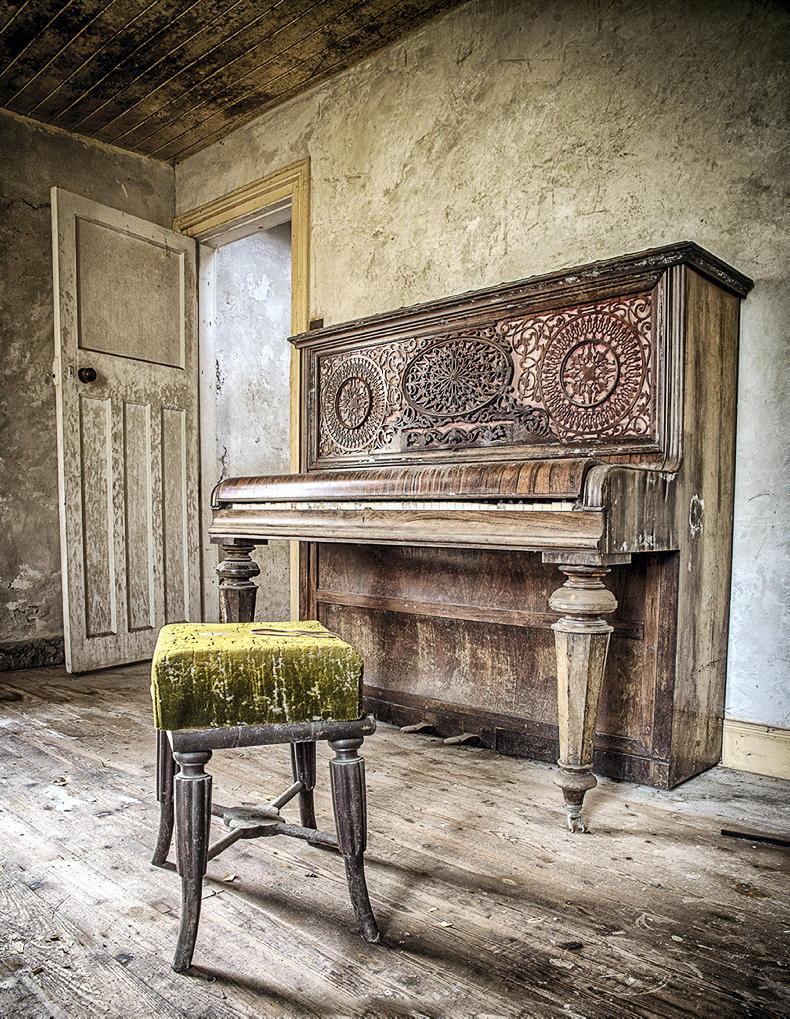
A most beautiful intricate piano discovered in a farmhouse.
As is standard for curious young minds, Brownlie and her friends used to hang out in the grounds and one night had an encounter that left young Rebecca wondering: “What was that … what did I experience, is there something more? Then I read on the Belfast Telegraph one day there was a new group called Paranormal Ulster. They were looking for recruits and I thought this sounds interesting so I emailed them and I ended up becoming the location finder and team photographer.”
Interestingly, these days Gill Hall Estate is now thriving under the direction of James Porter. He has built up the champion Old Glenort herd of Angus cattle and the Uppermill herd of Shorthorns. Gill Hall will be making a new name for itself in the new year when it plays host to the World Sheepdog trials in September 2023; a first for Northern Ireland and a date for many a reader’s diary, no doubt.
With her location-finding work for Paranormal Ulster taking her to places like Kinnitty and Charleville castles in Offaly, it was the discovery of the elegant Cairndhu house outside Ballymena, Co Antrim, that captured the attention of Rebecca: “I was taken aback – how had we not come across this before. This was the house that I started to look more into. I started looking at who lived here, what was that like and then I began to move away from the paranormal and just focus on the photography.”
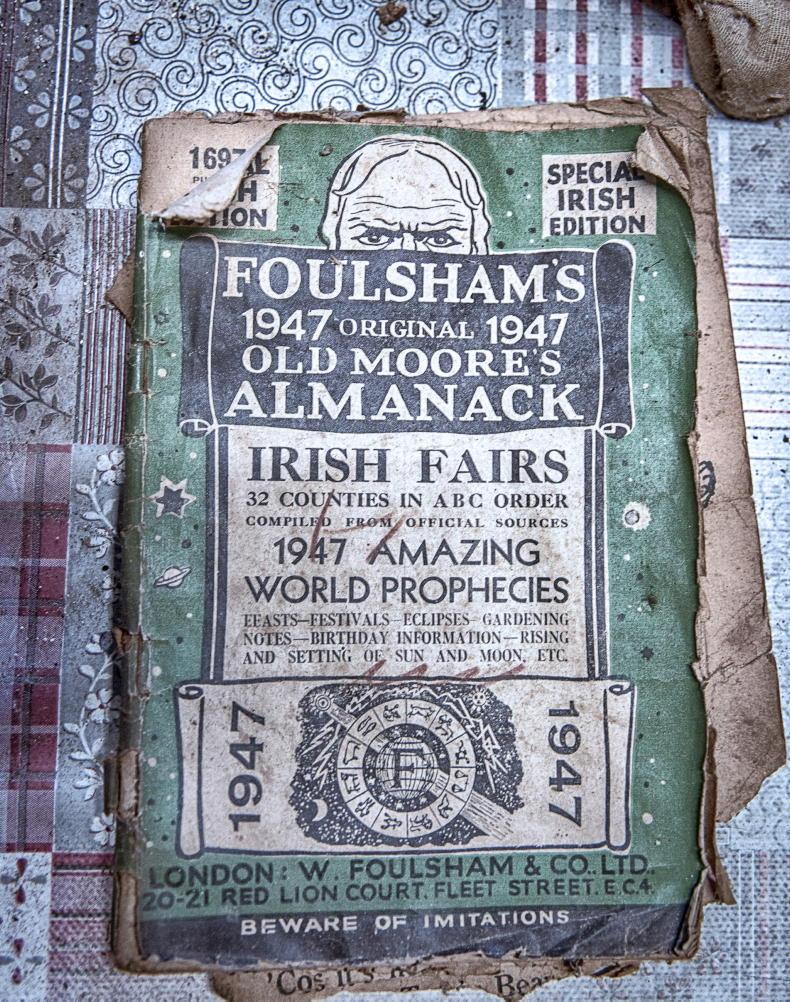
Old Moore's Almanac, a reference book that is found in many a rural home.
Reflecting on the journey, Rebecca reveals: “It started off as only getting an image that can tell a story without explanation. Then, it evolved into getting the history of the building to tell the story along with the photo.”
An elegant beauty
Cairndhu House, standing gracefully, approached by a sweeping drive, would evoke images of chic parties taking place on its veranda with the latest motor cars of the day delivering and collecting the cream of high societies guests. A bygone time.
Today, Cairndhu House is waiting to be filled with life, lights and furnishings again. In her investigations, Rebecca discovered Cairndhu did live up to its sociable image in its heyday. Generous owners Lady Edith Dixon and Sir Thomas Dixon loved to host parties and gatherings. Set on over 500 acres, Shorthorn and Galloway cattle were kept for beef and a walled garden provided produce for the house, with excess given to friends, family or sold at Larne market.
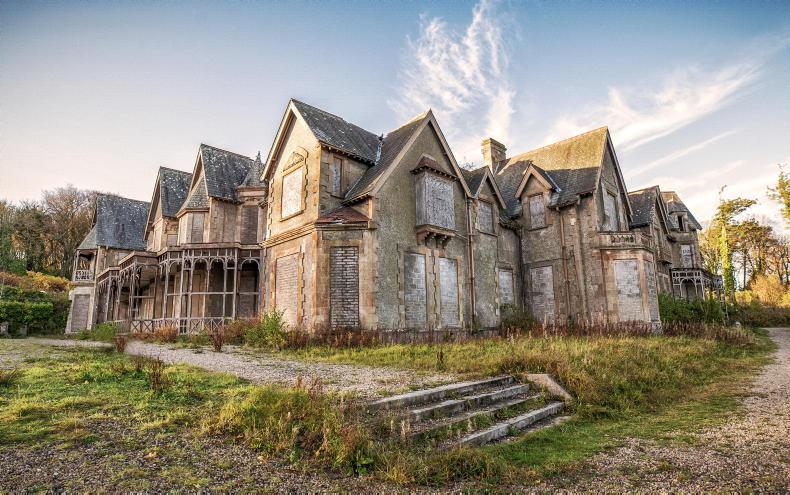
Cairndhu House Ballymena.
In 1947, the Dixons’ gifted the house and 100 acres to the Hospital Trust to be converted into a convalescent home. Over the course of her research, Brownlie was able to confirm the convalescent home was closed in 1986 and it has lain neglected since.
Another property to influence Rebecca’s photographic work is a cottage in Co Tyrone. Belonging to a farmer who asked Rebecca to take pictures of his aunt’s house, originally, the hope was for Rebecca to meet the owner of this cottage as he too, was into history. Sadly, this never happened as the gentleman, Dessie, died. Instead, she was invited to document Dessie’s house before it was demolished in order for the new generation to build their family home on-site. Recalling an early Sunday morning drive up to the Tyrone countryside, on arrival she was smitten: “Woah! – everywhere you looked, it was like something out of a folk museum … everywhere we looked there was history.”
A treasure trove
It was confirmed Dessie had been one of three brothers to grow up in the cottage, having lived there all his life, 87 years. Finding boxes and boxes of documents, Rebecca spent over three months making sure this artefact of social history was properly documented through her photography. Newspapers from 1911, certificates from the 1800s, Victorian-era clothing and old-style trunks with one of them full of love letters were among her finds. A 1947 edition of Old Moore’s Almanac – or almanack as it was spelt then – along with maps and the old wireless left sitting on the window sill were reminders of life in the countryside in Dessie’s time.
In the middle of unearthing so much history, a substantial question emerged that needed to be answered. Rebecca explains: “We discovered a box with the initials ER McQueen stamped on the side of it. McQueen was not a family name, no one knew who it was. There was a hat, a certificate from the 1800s, a picture of a policeman … I did an exhibition after documenting Dessie’s house and ER McQueen came up … we discovered people who turned out to be great nephews of Edwin McQueen. Dessie’s father had been married twice. His second wife had also been married twice. Edwin McQueen had been her first husband and they had only been married four months. Edwin died so these were her keepsakes of her husband. Wasn’t that so special I have this precious box of his life, that can be celebrated and talked about.”
Energies
While visiting properties, Rebecca notes the energy of buildings: “Every house has an energy, some stronger than others.” In the case of Dessie’s home, she recalls it had been a cold winter with a lot of snow and frost but yet, when she went in “there was a feeling of being warm and welcoming, like as if the fire had been on. That was a real testament to the family that had lived there.” Not all buildings felt so hospitable. Highlighting other “wee small unassuming houses” that may look lovely from the outside, once inside, Rebecca could pick up on a bad energy she interprets as: “the story of this house does not need to be told.”
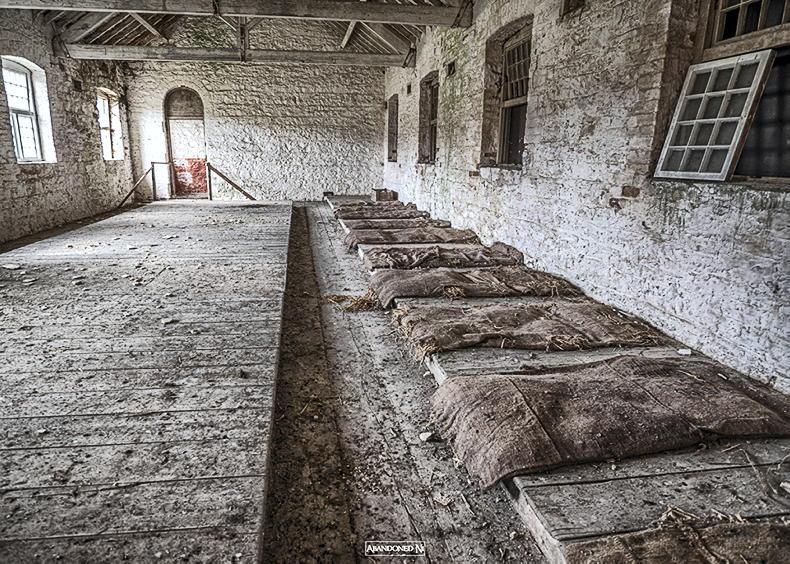
The sleeping area at Bawnboy workhouse.
Recalling a visit to Ennis asylum in Co Clare, Rebecca remembers a late summer evening and once inside, “it felt as if the night drew in too quickly … it is one of the heaviest energies on the island. I did not stay long; I took a few photos and we really got the feeling we were not welcome. I would always respect that and would leave.” Thinking pensively of the heavy energy felt on her visit to the mother and baby home in Co Down, “it was not welcoming. So many people have gone through those homes that we don’t know about, and that maybe they don’t know about. It is an awful part of our history. On the one hand it is now demolished but on the other hand … we need to remember and learn from it.”
Dwelling so much on our island’s built and social past, what are Rebecca Brownlie’s hopes for the future? “I would really like to see the grade B listings [designations given to historic buildings that bring planning restrictions] eased and the planning authorities to work with the owners of these properties to get these properties back to life – in some or any form at all.”
Summing up: “I also like to think I’m giving the buildings and past lives a platform to be remembered forever.” As for the treasure trove found in Dessie’s home: “They donated the stuff to me so eventually I would like to get a wee house like Dessie’s and create a wee museum.”
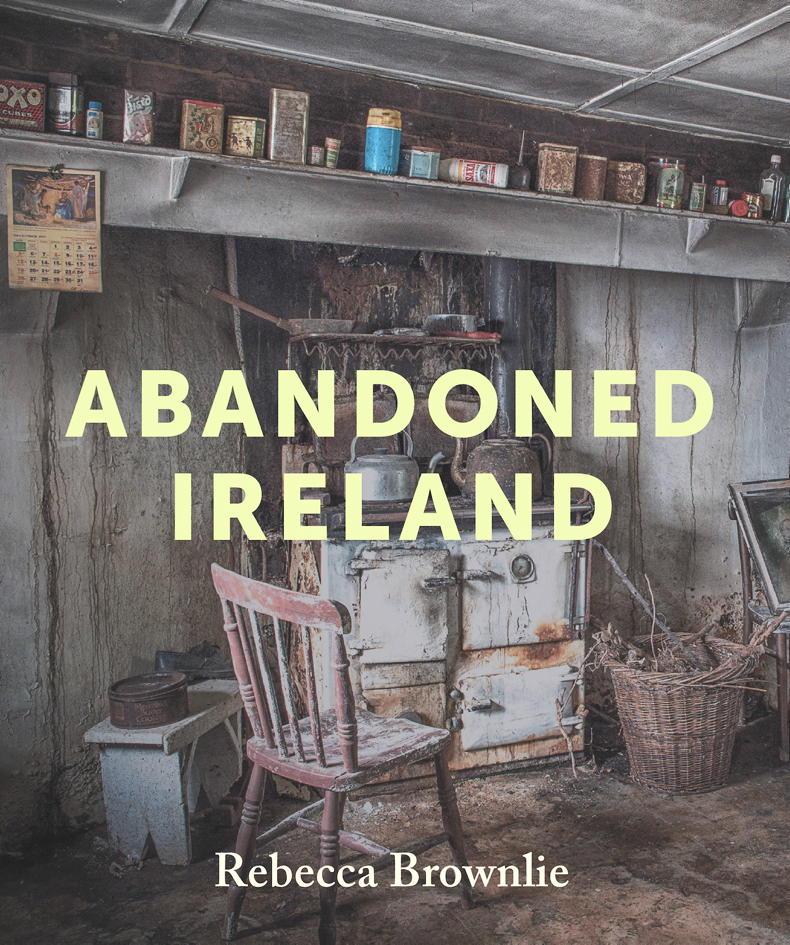
If anyone owns a property, they would like Rebecca to document get in touch through her website or social channels
@AbandonedNi
Read more
My Country Living: fighting cocks, paid in geese and 12 in the family
Short story: The Best Wheat in The Barrow Valley
Opening up Abandoned Ireland, the comfortable size and intriguing pictures led to this writer putting the kettle on and having a leaf through the pages, poring over properties from once-opulent estate houses to an eerie borstal and a hotel that nature has taken over quite rapidly. The absence of the flimsy dust jacket usually found on hardback books added to the enjoyment of this publication.
Speaking with author Rebecca Brownlie from her home in the Co Down countryside, she gives all credit to the publishers for taking a risk on the appearance; adding that they deliberated on going with this format for weeks.
The hook
Hooking the reader in the introduction is a technique employed by writers and professional photographer Brownlie got straight down to business in her introduction, referring to her membership of a paranormal investigation group. How this came about was from childhood stories of Gill Hall, an estate house near Dromore, Co Down. At the time, it was considered one of the most haunted houses in Ireland and in the 1970s the army blew it up after a fire ravaged the building. Brownlie adds: “It was attracting too much attention.”

A most beautiful intricate piano discovered in a farmhouse.
As is standard for curious young minds, Brownlie and her friends used to hang out in the grounds and one night had an encounter that left young Rebecca wondering: “What was that … what did I experience, is there something more? Then I read on the Belfast Telegraph one day there was a new group called Paranormal Ulster. They were looking for recruits and I thought this sounds interesting so I emailed them and I ended up becoming the location finder and team photographer.”
Interestingly, these days Gill Hall Estate is now thriving under the direction of James Porter. He has built up the champion Old Glenort herd of Angus cattle and the Uppermill herd of Shorthorns. Gill Hall will be making a new name for itself in the new year when it plays host to the World Sheepdog trials in September 2023; a first for Northern Ireland and a date for many a reader’s diary, no doubt.
With her location-finding work for Paranormal Ulster taking her to places like Kinnitty and Charleville castles in Offaly, it was the discovery of the elegant Cairndhu house outside Ballymena, Co Antrim, that captured the attention of Rebecca: “I was taken aback – how had we not come across this before. This was the house that I started to look more into. I started looking at who lived here, what was that like and then I began to move away from the paranormal and just focus on the photography.”

Old Moore's Almanac, a reference book that is found in many a rural home.
Reflecting on the journey, Rebecca reveals: “It started off as only getting an image that can tell a story without explanation. Then, it evolved into getting the history of the building to tell the story along with the photo.”
An elegant beauty
Cairndhu House, standing gracefully, approached by a sweeping drive, would evoke images of chic parties taking place on its veranda with the latest motor cars of the day delivering and collecting the cream of high societies guests. A bygone time.
Today, Cairndhu House is waiting to be filled with life, lights and furnishings again. In her investigations, Rebecca discovered Cairndhu did live up to its sociable image in its heyday. Generous owners Lady Edith Dixon and Sir Thomas Dixon loved to host parties and gatherings. Set on over 500 acres, Shorthorn and Galloway cattle were kept for beef and a walled garden provided produce for the house, with excess given to friends, family or sold at Larne market.

Cairndhu House Ballymena.
In 1947, the Dixons’ gifted the house and 100 acres to the Hospital Trust to be converted into a convalescent home. Over the course of her research, Brownlie was able to confirm the convalescent home was closed in 1986 and it has lain neglected since.
Another property to influence Rebecca’s photographic work is a cottage in Co Tyrone. Belonging to a farmer who asked Rebecca to take pictures of his aunt’s house, originally, the hope was for Rebecca to meet the owner of this cottage as he too, was into history. Sadly, this never happened as the gentleman, Dessie, died. Instead, she was invited to document Dessie’s house before it was demolished in order for the new generation to build their family home on-site. Recalling an early Sunday morning drive up to the Tyrone countryside, on arrival she was smitten: “Woah! – everywhere you looked, it was like something out of a folk museum … everywhere we looked there was history.”
A treasure trove
It was confirmed Dessie had been one of three brothers to grow up in the cottage, having lived there all his life, 87 years. Finding boxes and boxes of documents, Rebecca spent over three months making sure this artefact of social history was properly documented through her photography. Newspapers from 1911, certificates from the 1800s, Victorian-era clothing and old-style trunks with one of them full of love letters were among her finds. A 1947 edition of Old Moore’s Almanac – or almanack as it was spelt then – along with maps and the old wireless left sitting on the window sill were reminders of life in the countryside in Dessie’s time.
In the middle of unearthing so much history, a substantial question emerged that needed to be answered. Rebecca explains: “We discovered a box with the initials ER McQueen stamped on the side of it. McQueen was not a family name, no one knew who it was. There was a hat, a certificate from the 1800s, a picture of a policeman … I did an exhibition after documenting Dessie’s house and ER McQueen came up … we discovered people who turned out to be great nephews of Edwin McQueen. Dessie’s father had been married twice. His second wife had also been married twice. Edwin McQueen had been her first husband and they had only been married four months. Edwin died so these were her keepsakes of her husband. Wasn’t that so special I have this precious box of his life, that can be celebrated and talked about.”
Energies
While visiting properties, Rebecca notes the energy of buildings: “Every house has an energy, some stronger than others.” In the case of Dessie’s home, she recalls it had been a cold winter with a lot of snow and frost but yet, when she went in “there was a feeling of being warm and welcoming, like as if the fire had been on. That was a real testament to the family that had lived there.” Not all buildings felt so hospitable. Highlighting other “wee small unassuming houses” that may look lovely from the outside, once inside, Rebecca could pick up on a bad energy she interprets as: “the story of this house does not need to be told.”

The sleeping area at Bawnboy workhouse.
Recalling a visit to Ennis asylum in Co Clare, Rebecca remembers a late summer evening and once inside, “it felt as if the night drew in too quickly … it is one of the heaviest energies on the island. I did not stay long; I took a few photos and we really got the feeling we were not welcome. I would always respect that and would leave.” Thinking pensively of the heavy energy felt on her visit to the mother and baby home in Co Down, “it was not welcoming. So many people have gone through those homes that we don’t know about, and that maybe they don’t know about. It is an awful part of our history. On the one hand it is now demolished but on the other hand … we need to remember and learn from it.”
Dwelling so much on our island’s built and social past, what are Rebecca Brownlie’s hopes for the future? “I would really like to see the grade B listings [designations given to historic buildings that bring planning restrictions] eased and the planning authorities to work with the owners of these properties to get these properties back to life – in some or any form at all.”
Summing up: “I also like to think I’m giving the buildings and past lives a platform to be remembered forever.” As for the treasure trove found in Dessie’s home: “They donated the stuff to me so eventually I would like to get a wee house like Dessie’s and create a wee museum.”

If anyone owns a property, they would like Rebecca to document get in touch through her website or social channels
@AbandonedNi
Read more
My Country Living: fighting cocks, paid in geese and 12 in the family
Short story: The Best Wheat in The Barrow Valley










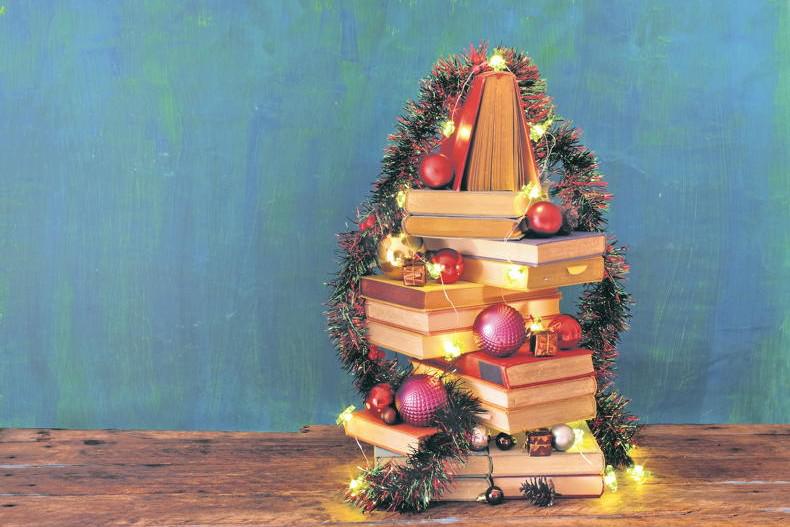

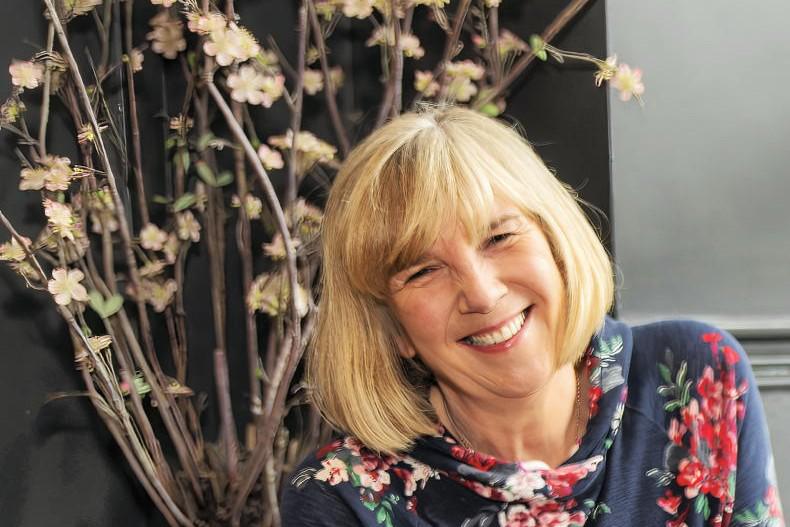
SHARING OPTIONS